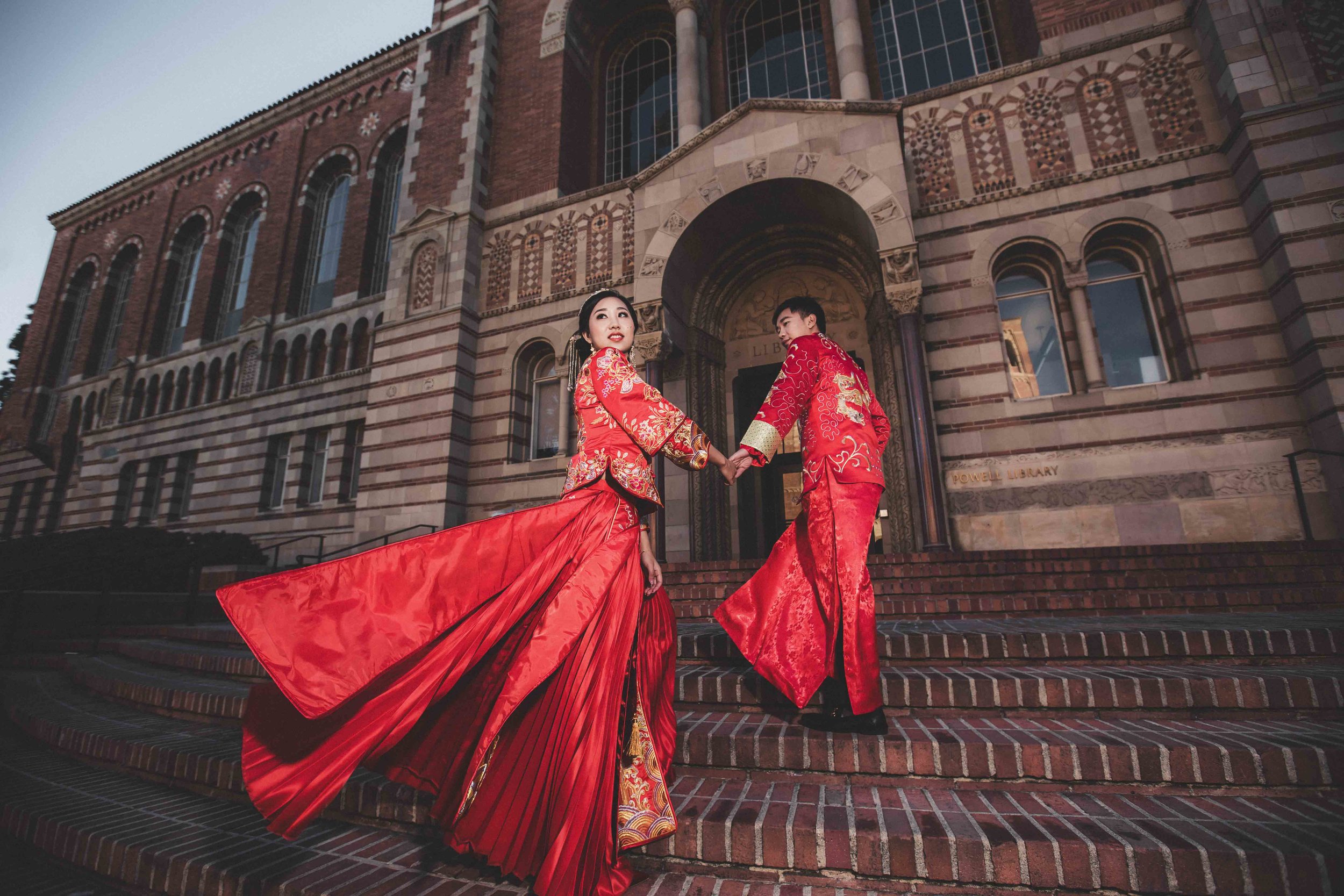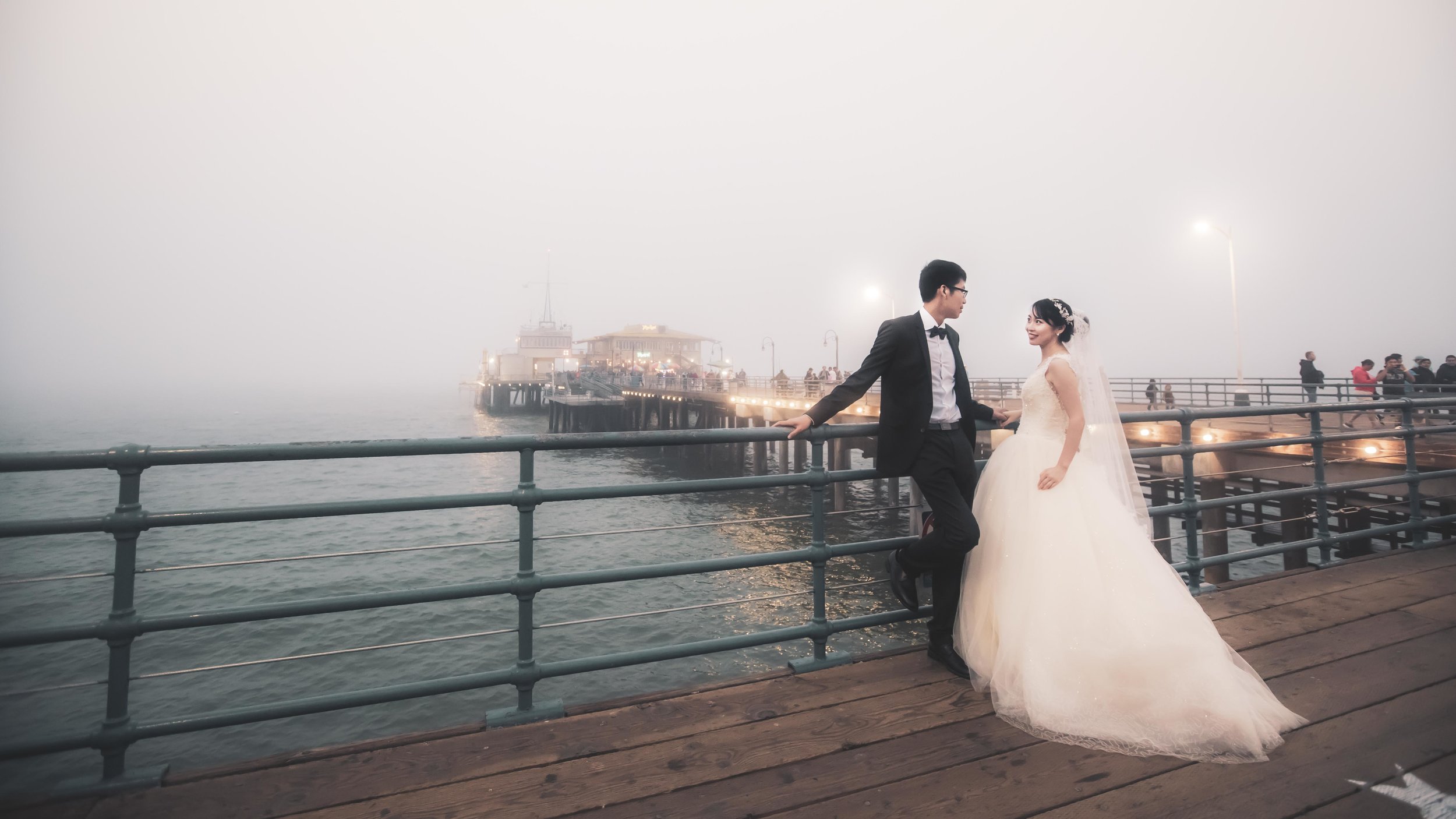Chinese Wedding
Chinese Wedding Photographer and Videographer
Planning for Chinese Wedding!
Planning a wedding can be both exciting and overwhelming, especially when blending two cultures. However, with a bit of research, organization, and creativity, you can plan a beautiful and meaningful celebration that reflects your unique love story. This comprehensive guide will provide you with essential tips and advice to help you plan your Chinese wedding in the States.
Step 1: Budget
Establish a budget before you start planning. Determining a budget that works for you and your partner helps set your priorities and avoid overspending. Consider the number of guests, the venue, catering, decor, and other wedding-related expenses. It is essential to have a budget plan on how much you are willing to spend and to stick to it.
Family Involvement?
Try not to get the family over-involved, for hosting a wedding is very stressful. Adding a layer of comments and suggestions every step of the way is excessive. However, if you cannot avoid this situation, please continue Step 2.
Step 2: Choose a Wedding Date
Consult with your families to select a wedding date that is significant and auspicious. In Chinese culture, certain dates and times are considered luckier than others. Hence, couples may consult various sources, such as the Chinese Almanac, zodiac signs, numerology, and feng shui, to find a date that is considered lucky and promotes happiness and prosperity in their marriage. Balancing the wedding date considering the Chinese culture and the convenient schedules for both families allows enough time for planning and preparations. Just know that the busiest time for a wedding in LA and OC is between September and November.
Step 3: Select a Venue or Venues
Choosing the right venue is crucial to your wedding celebration. Consider your budget, guest count, and location when selecting a venue. Look for a place that offers indoor and outdoor options and a space for a tea ceremony if you plan to have one.
Step 4: Traditions
Incorporate Chinese customs and traditions. Chinese weddings are rich in customs and traditions that symbolize love, happiness, and prosperity. Consider incorporating these customs into your wedding celebration, such as a tea ceremony and lion dancers.
Step 5: Your Wedding Attire
Traditional Chinese wedding attire includes the Qipao for brides and the Chongshan for grooms. However, modern couples may opt for more contemporary styles that reflect their personal taste and style.
One of the best reasons for being a Chinese bride is that you will have access to and knowledge about online places like Tao Bao, where you can purchase dresses for less than $200 and have them tailor-fitted in the States. On the other hand, you also need to consider if you need two dresses: a Chinese wedding gown for the tea ceremony and table visits and a Wedding gown for the ceremony and reception.
Step 6: Dinner
Plan your wedding banquet. The wedding banquet is a significant part of the Chinese wedding celebration. If your guests are mainly Chinese, work with your caterer to select a menu that includes traditional Chinese dishes. Most venues accept family-style caterers from restaurants. Another option is to host your wedding in a Chinese Restaurant for exceptional food!
Step 7: Invitations
Select and send out invitations that reflect your wedding style and theme. Consider incorporating red and gold colors, Chinese characters, or traditional Chinese patterns into your stationery. For your convenience, you can source this out of Tao Bao. In the US, you can use Minted to print your invitations.
Step 8: Photographer and Videographer
Hire us! LOL! Kidding aside, Lulan Studio is committed to delivering photographs with stunning realism and vibrant, natural colors that mirror the human eye's perception. Your wedding day is a beautiful and unforgettable moment that you will want to cherish forever. Hire a professional photographer and videographer specializing in Chinese weddings to capture every moment.
Step 9: Enjoy Your Wedding
On your wedding day, bask in all the good memories and enjoy every moment. Remember that your wedding celebration reflects your love story. It is a day to celebrate your union with your partner, family, and friends.
Planning a Chinese wedding in the States can be challenging, but with these tips and advice, you can create a beautiful and memorable celebration that blends both cultures together. Congratulations and best wishes on your wedding day!
Traditions of Chinese Weddings: Tea Ceremony
A tea ceremony is crucial in traditional Chinese weddings. It symbolizes respect and gratitude towards the couple's parents and elders. If you're planning a Chinese wedding, incorporating a tea ceremony can add a meaningful and memorable touch to your celebration.
Here's a step-by-step guide on how to host a tea ceremony on your Chinese wedding day.
Step 1: Choose the Tea Set
The tea set is one of the highlights of the tea ceremony. Choose a tea set that reflects your wedding style and personal taste. Consider selecting one with a dragon and phoenix design, as they are traditional symbols of a harmonious marriage.
Step 2: Prepare the Tea
Select a high-quality tea that you and your partner enjoy. Certain types of tea have specific meanings in Chinese culture. For example, Jujube tea is often used in the wedding tea ceremony to symbolize fertility and hope for a large family. Green or black tea is a common choice for the tea ceremony. Brew the tea in hot water for a few minutes, ensuring the flavor is rich and aromatic.
Step 3: Dress in Traditional Attire
The couple and their families usually dress in traditional Chinese attire for the tea ceremony. The bride will wear a red qipao or cheongsam, while the groom will wear a black or blue changshan. The parents and elders can also dress in traditional attire to honor the occasion.
Step 4: Arrange the Tea Ceremony Space
Choose a quiet and peaceful location for the tea ceremony. Arrange the tea set, cups, and teapot on a table. Place red cushions or a mat on the floor for the couple and their parents to sit on.
Step 5: Begin the Tea Ceremony
The tea ceremony typically starts with the couple serving tea to their parents and elders. The bride and groom will kneel before their parents and pour tea on the teacups for them. The parents will then give the couple red envelopes filled with money or other gifts.
Step 6: Exchange Rings
After serving tea to their parents, the couple will exchange rings. This part is a modern addition to the tea ceremony and symbolizes the couple's commitment to each other.
Step 7: Serve the Tea to Guests
After the parents, the couple will serve tea to their guests, starting with the groom's side and then the bride's side. In exchange, the guests will give the couple monetary gifts in red envelopes or other presents.
Step 8: End the Tea Ceremony
Once all the guests have been given a cup of tea, the tea ceremony is complete. Finally, the couple and their families will take photos to commemorate the occasion.
In conclusion, hosting a tea ceremony on your Chinese wedding day is a beautiful and meaningful way to honor your parents and elders. With these steps, you can create a memorable and authentic tea ceremony that reflects your unique love story and culture.
Door Games lists
The groom and his groomsmen arrive at the bride's house to "pick her up" for the wedding, but the bridesmaids block their way with various challenges or games. The groom and his groomsmen must complete these challenges to earn the right to see the bride and take her to the wedding ceremony.
Trivia Game: The groom and the bride can create a set of trivia questions about their relationship and wedding details. They can ask each other questions, and whoever gets the answer wrong has to perform a task, such as singing a song or doing a silly dance.
Scavenger Hunt: The groom can leave clues for the bride to follow, leading her to different locations or landmarks that hold special meaning to their relationship. At each spot, the bride can find a small gift or token from the groom.
Romantic Escape Room: The groom can set up a small escape room game for the bride, filled with puzzles and challenges that they have to solve together. At the end of the game, the bride can find a special surprise or gift from the groom.
Treasure Hunt: The groom can create a treasure hunt for the bride, where she has to find hidden notes or clues that lead to a final treasure. The treasure can be a gift or a romantic gesture, such as a love letter or a bouquet of flowers.
Blindfold Game: The groom can blindfold the bride and lead her to a place where he has prepared a surprise, such as a special meal or a romantic setup. The bride can only take off the blindfold once they arrive at the location.
Dance-Off: The groom and the bride can have a dance-off, where they each pick a song and perform their best dance moves. They can also invite their friends and family to join the fun.
Photo Scavenger Hunt: The groom can create a list of items or people the bride has to take photos with before they arrive at the wedding ceremony. For example, the bride may have to be photographed with a stranger, a flower shop, a street performer, or a famous landmark. This game encourages the bride to interact with her surroundings and creates fun and unique wedding photos.
Karaoke Challenge: The groom and the bride can compete in a karaoke challenge, where they each pick a song and perform it in front of their friends and family. The audience can judge who has the better singing skills, and the loser has to perform a dare or task.
Charades: The groom and the bride can play a game of charades, where they act out different words or phrases related to their wedding, relationship, or interests. This game can be a fun way to relive memories and inside jokes.
Truth or Dare: The groom and the bride can play a game of truth or dare, where they have to answer a question truthfully or perform a dare chosen by the other person. This game is a fun way to reveal new things about each other or to share funny and embarrassing moments.
Puzzle Challenge: The groom can create a personalized puzzle with a photo or message, and the bride has to solve it before they can continue to the next location. This game can be a romantic and thoughtful way to express love and affection.
Memory Lane Game: The groom and the bride can take a trip down memory lane by visiting different locations that hold special meaning to their relationship. At each venue, they can share a memory or a story about their time together.
Sample Timeline of a Chinese Wedding
The exact timeline of a Chinese wedding can vary depending on the region, culture, and individual preferences. However, here is a sample timeline that provides an overview of the typical sequence of events in a Chinese wedding:
Before the Wedding:
Engagement: The couple gets engaged, and the groom's family presents gifts to the bride's family symbolizing their intention to marry.
Selection of auspicious dates: The couple consults a fortune teller or chooses an auspicious date for the wedding ceremony based on the Chinese lunar calendar.
Preparation: The couple makes arrangements for the wedding venue, wedding attire, invitations, and other details.
The Wedding Day: Morning:
Hair and Makeup: The bride and her bridesmaids get their hair styled and makeup done.
Groom's arrival: The groom and his groomsmen arrive at the bride's home to pick up the bride.
Tea ceremony: The couple serves tea to their parents and other family members to signify their respect and gratitude.
Door games: The groom and his groomsmen must complete a series of fun and sometimes embarrassing challenges to gain entry to the bride's room.
Afternoon:
Wedding ceremony: The couple exchanges vows and rings in a traditional Chinese ceremony. The bride wears a red dress, and the groom wears a black or blue suit.
Banquet: A lavish banquet follows the wedding ceremony, with many courses of delicious food and traditional Chinese performances and speeches.
Toasting: The bride and groom visit each table to toast with their guests and receive congratulations and gifts.
Evening:
Bridal chamber: The couple retreats to their bridal chamber, where a ritual is performed, like unveiling the bride, the newlyweds drinking wine together, and tying the knot on each other.
Departure: The couple departs the wedding venue, often in a decorated car, to start their new life together.
Again, it's important to note that this is just a sample timeline, and the exact sequence and timing of events can vary depending on the couple's preferences and regional customs.
FAQs for Chinese Weddings
What happens at a Chinese wedding?
A traditional Chinese wedding is a grand and elaborate affair that involves multiple customs and rituals. The betrothal ceremony is the first event, where the groom's family presents gifts to the bride's family as a symbol of their intention to marry. The wedding ceremony happens at a venue such as a hotel ballroom or temple, and the bride and groom exchange vows and rings. The tea ceremony is a significant ritual in Chinese weddings, during which the couple serves tea to their parents and elders. The wedding banquet is a lavish affair featuring multiple courses of food, speeches, and performances. After the banquet, the newlyweds retire to their bridal chamber, and in some traditions, the groom must perform tasks to prove his worthiness to his bride. The morning after the wedding, the bride serves tea to her husband's family, and the couple receives gifts and blessings from their relatives.
What is the etiquette for giving red envelopes (hongbao) at a Chinese wedding?
Giving red envelopes or hongbao is a customary practice in Chinese culture. There are some general guidelines for this tradition. For example, it must contain an even amount of money, and present the envelope with both hands to express congratulations and well-wishes to the couple. It is given during the wedding banquet or the tea ceremony.
What is the significance of the Chinese wedding tea ceremony?
The ceremony is significant because it represents the couple's recognition of their parents' contribution to their upbringing and commitment to honoring their elders. This tradition also represents the joining of two families through marriage. Additionally, the tea ceremony is a way to show appreciation and respect for Chinese traditions and customs. This tradition serves as a reminder of the importance of family values and unity. Overall, the Chinese wedding tea ceremony is a significant part of Chinese culture in strengthening family bonds and honoring the couple's parents and ancestors.
What is the traditional Chinese wedding banquet menu?
The traditional Chinese wedding banquet menu is a lavish multi-course feast that typically features a variety of dishes symbolizing good luck, prosperity, and happiness. The menu often includes a combination of meat, seafood, and vegetable dishes, as well as soups and rice. Some popular dishes include roasted pig, lobster, abalone, fish, and dumplings. The presentation is also significant, with many dishes arranged to represent good fortune or happiness. For example, a fish dish may be presented with the head and tail intact to symbolize completeness and unity. The banquet is an opportunity for the newlyweds to celebrate with their family and friends and to show their gratitude for their guests' support and well wishes.
What are some appropriate wedding gifts for a Chinese couple?
Some traditional gifts include red envelopes filled with money, tea sets, and Chinese paintings or calligraphy. Other gifts include household appliances, jewelry, and luxury items such as watches or handbags. When selecting a gift, choose something thoughtful that reflects the couple's personalities and interests. Gifts in red or have auspicious symbolism are also appreciated, as they signify good luck and fortune to the newlyweds. Additionally, practical gifts for the couple's daily life are always a good choice.


